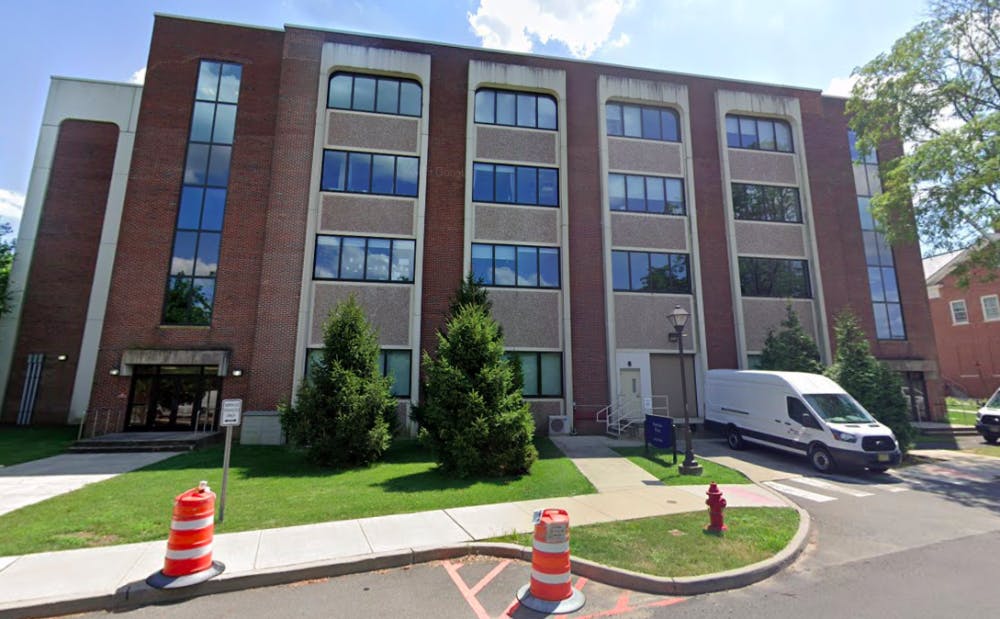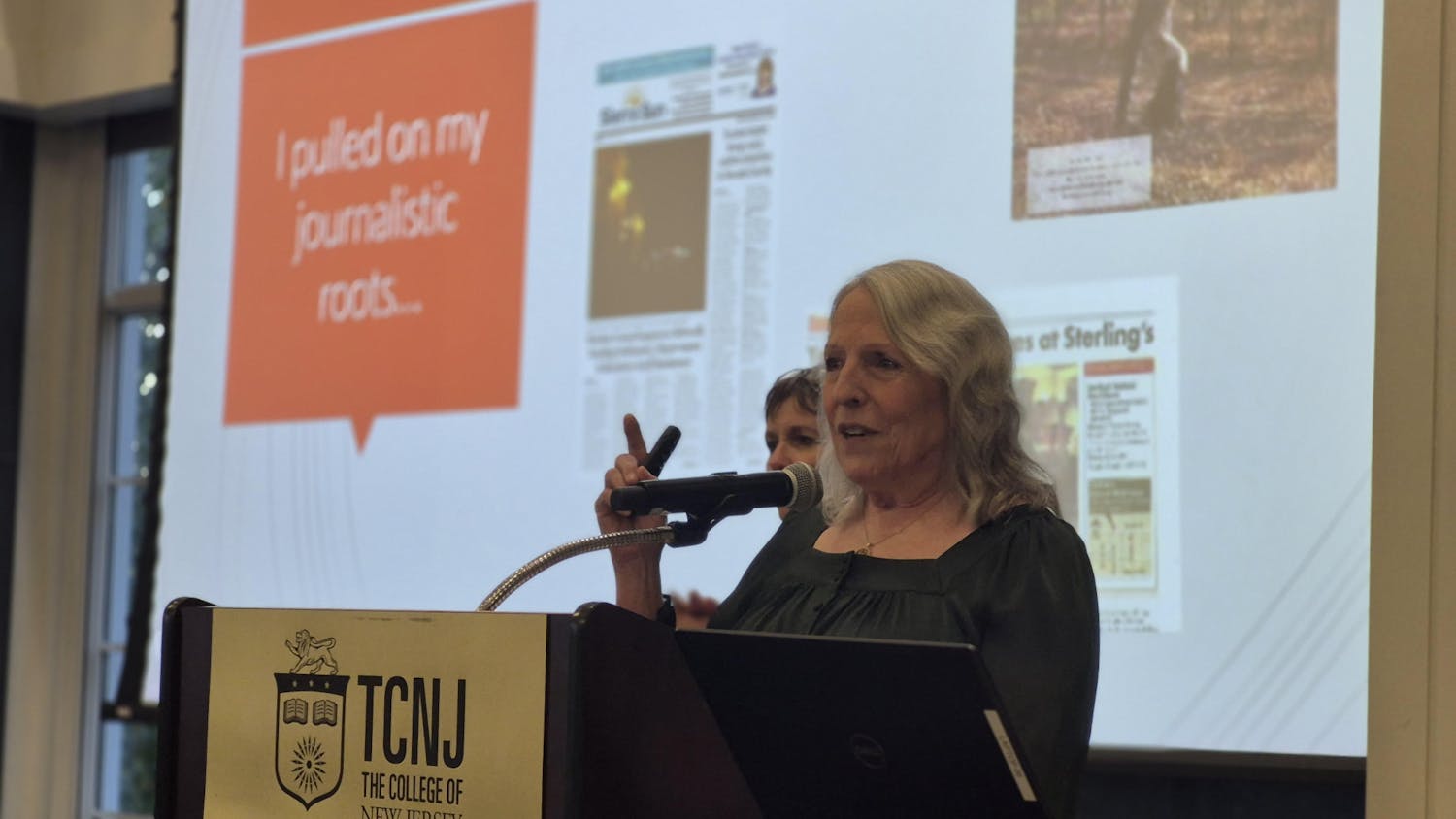Len La Rocca
News Editor
For many students, the building has become a cliché synonymous with dread at the College, and a place on the edge of campus that has seemingly taken on a life of its own.
Yet, with countless blemishes, a dated design and being the home forced upon the computer science department, students question why they are taking classes in a building that once had plans for demolition — Forcina Hall.
The 50-year-old building features worn-down bathrooms, water damage and an outdated design of the late 1960s, creating what many students argue is a dim learning environment.
“The general atmosphere and the feel of that building doesn’t feel like a welcoming college campus,” said Ethan Zeigler, a senior computer science major. “It feels like being shoved into the past.”
Built in 1969, the building served as the home of the College’s education department until a single-floor wing of Forcina Hall was demolished in 2010 to make room for what is now the Education Building.
Shrouded in controversy from the College community, the administration then planned to use Forcina Hall as a temporary location, also known as “swing space,” for college operations while other buildings were being renovated or completed.
Forcina would then be demolished in 2021 as scheduled in the 2008 Academic/Administrative and Housing Facilities Master Plans, according to a March 2008 TCNJ Magazine article. Norsworthy and Centennial Residential Halls were also slated for demolition in 2014 and 2017, respectively. However, these plans never came to fruition and the three buildings still stand to this day.
Marking an end to all hopes of demolishing Forcina was the destruction of the former home of the computer science department, Holman Hall. The 2013 demolition made room for what is now the STEM Building, which officially opened October 2017.
During construction of the STEM Building, the computer science department was moved to the fourth floor of Forcina Hall with the understanding that it was a temporary swing space. Essential renovations were made to the fourth floor to accommodate a learning environment fit for the computer science curriculum. Still, the general belief was that this move was temporary.
Chair of the computer science department Monisha Pulimood, along with the rest of the department, had always thought the space lost in Holman Hall would be returned to them in the new STEM Building.
“We were always under the assumption that we would be coming back into this space here (STEM) and that we would be teaching here,” she said. “It’s only later on in the design process suddenly we realized that the classrooms and the labs that we had expected would be in the building were not going to be in this building.”
The computer science department was not alone in thinking that the new STEM building would be its new home. According to the TCNJ Magazine article from March 2008, “Holman Hall will be demolished in 2013 to make room for a new academic building, which is scheduled to be completed by 2015. The new building will house the computer science department.”
Yet, the STEM Building does not adequately house the department, as there are only two possible classrooms for computer science majors to use. With no plans set to move the majority of computer science classes to the building, Forcina Hall appears to be the permanent home of the department.
“STEM only has one computing/teaching lab and it has one classroom,” Pulimood said. “Both of them are shared with engineering. So we get a fraction of the time every week in that classroom.”
The computer science department received exclusive access to the STEM Building’s project workshop lab due to the lack of lab access for students to code.
“Because the teaching labs are all so heavily utilized now … students don’t get enough time in there in between classes,” Pulimood said. “So that’s the purpose of the project workshop lab, but that’s not enough, right? And so that’s the frustration that faculty and students are facing — we still have to go over to Forcina Hall for classes.”
Zeigler has taken classes in Forcina Hall since he was a freshman and is fed up with the lack of transparency between his department and the College.
“We didn’t expect for this to become a problem,” he said. “We were led to believe that once STEM was up, Forcina was going to be a long, distant memory that we could forget. If you look at the plans that they made for the STEM Building in the first place, it’s pretty clear that was never the intention, and if it was the intention, there was a serious lack of thought there.”
Rather than working in the state-of-the-art STEM Building, computer science classes take place in a building that was once deemed fit for demolition by the College. Conditions such as paint chipping from the walls, flimsy bathroom stalls and windowless hallways are often cited by students when discussing the flaws in Forcina Hall.
“The conditions in that building … it’s not conducive to academics,” Pulimood said.

However, the College has addressed the major mechanical issues in the deteriorating building, such as fixing the leaking roof and troublesome HVAC system. Professor of computer science John DeGood believes that these fixes have changed Forcina from an unfavorable place to teach to an enjoyable one.
“There’s pre-renovation and there’s post-renovation,” DeGood said. “So pre-renovation, it was an embarrassment. The roof had huge leaks and the hallways were full of buckets and trash cans … Every time it rained it was like a waterfall in the hallways. The bottom line is the building looks somewhat dated just because of its age, but mechanically, it seems very solid now and I’m no longer embarrassed to have students taking classes in it.”
While Forcina Hall has stood for 50 years, the College has shown its capability to maintain older buildings, such as Green Hall, which opened its doors in 1931, yet remains an iconic site for many students at the College. Some students question why Forcina Hall has been left to deteriorate.
“It’s hard to really explain why Forcina is really what’s been left over,” Zeigler said. “Forcina is on the edge of campus. It’s kind of out of the way. It isn’t as much of an image to the campus would be one of my guesses.”
Throughout the campus, Forcina Hall sticks out. Structures such as the R. Barbara Gitenstein Library and the Arts and Interactive Multimedia Building set a quality standard for the campus that many students and faculty believe Forcina Hall does not meet.
“How does this building get to this point where it almost feels like it was forgotten about?” Zeigler said. “We need to do real work to make this reflect the kind of environment we want for TCNJ and the kind of environment we want to show for the people who want to come here.”







